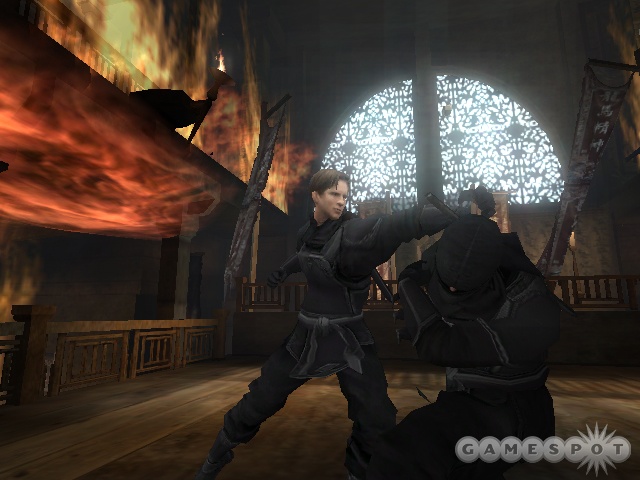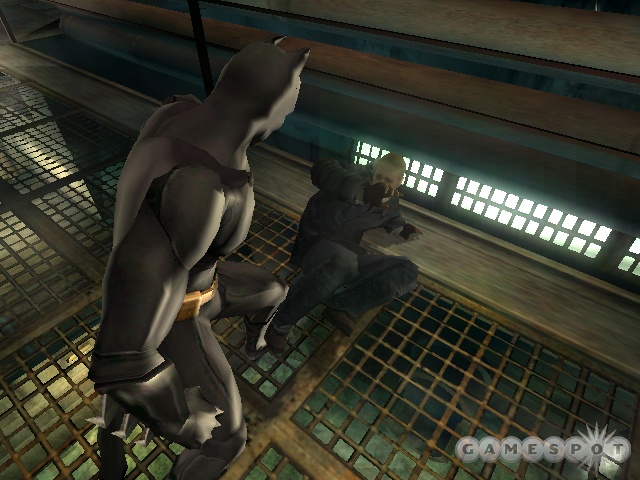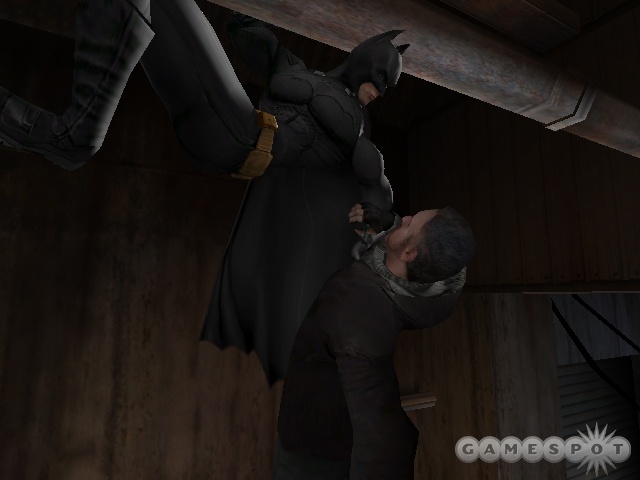Batman Begins Designer Diary #2
Lead producer Reid Schneider discusses animation techniques and fighting styles that will appear in the upcoming Batman game.
In his first Batman Begins designer diary, lead producer Reid Schneider discussed his team's goals for the upcoming movie-inspired action game. Now, with the game less than a month from store shelves, Schneider talks about some of the ways his team has gone about accomplishing the goals it set for itself, with a focus on animation techniques, in-game combat, and the developers' interactions with key personnel working on the Batman Begins movie.
Modern-Day Ninja
By Reid Schneider
Lead Producer, Electronic Arts
When we began developing Batman Begins, all we had access to were the script and production design/notes. These materials were really useful from a story and design perspective, but we still had no idea how the character was going to move, fight, and interact with his environment. That all changed once we began our visits to the set.
On one of our first visits to Shepperton Studios, we toured the massive Himalayan monastery that had been reconstructed on a soundstage. From a visual perspective, it was everything we expected. It had austere wood archways that looked worn and battered, ornate Asian designs painted on the walls, and tapestries hanging everywhere. In short, it was impressive. While we were there, we had our first (of many) meetings with Paul Jennings, the stunt coordinator for the film. Paul also designed many of the fight sequences in the movie. 
Our initial conversations with Paul focused on Batman's movement. Paul emphasized that the goal of Batman Begins was to create a great superhero movie, but at the same time maintain a character that was grounded in reality. This was very helpful to our team, as it immediately set the tone for the animation direction of the game. Jose Garcia (lead animator) built Batman's animations to reflect this realistic tone. From a technical perspective, we chose to key-frame (hand-animate) every animation in the game, as opposed to using motion capture.
All of us were big believers that with the right animation crew, we could create motion in the game that looks very realistic but still "feels" right to the player. If you play many third-person action adventure games, you quickly realize which ones used "mo-cap" for the player control versus which ones key-framed it. When you pick up the controller for Batman Begins, the game immediately feels smooth, intuitive, and responsive. Credit for this goes to Mat Sneap, who programmed the main character control. He and Jose worked tirelessly to give it the proper feel. Linking player control and animation is highly iterative, and it takes a long time to get it right. However, once you've nailed it, everything else falls into place. 
After getting the motion down, we switched our focus to designing the fighting system. Once again, Paul Jennings proved invaluable here. He explained to us the key-sei martial arts system that they were using in the movie. The key-sei system is focused around short and quick strikes that emphasize effectiveness over flamboyance.
Paul also understood that our goal was to make the best game experience--rather than a carbon copy of the film--and that we needed to elaborate on what the movie designed. For this we introduced more high and low attacks (each on separate buttons) that could be chained together. Finally, we focused on the "special moves" of the game. These included stealth attacks, grapple attacks (where the player comes down behind an enemy and grabs him from behind), interrogation sequences, finishing moves, and more. Our goal when creating all these moves was to keep a realistic style, while at the same time having a distinct Batman style and focus on play control. 
Once we had these moves working in a white room (test map), we began designing levels. Our goal with the levels was always to construct them in such a way that the player "felt" like Batman. We wanted to push the player to utilize Batman's full suite of moves. This ranges from climbing pipes, to traversing ledges, to using the batgrapple. We were very hard on ourselves to make sure that each move was exploited, and we never added moves or features "just to add them."
Got a news tip or want to contact us directly? Email news@gamespot.com
Join the conversation